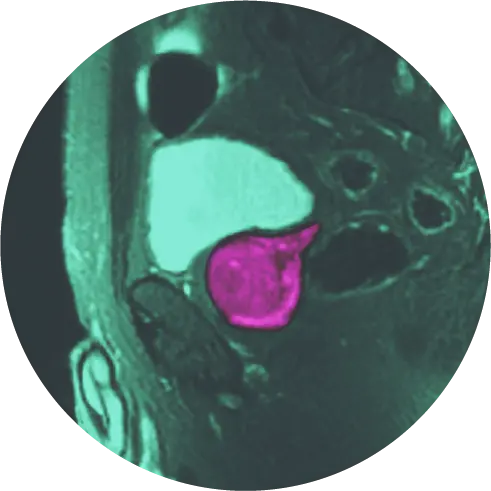One of the bright spots of the early weeks and months of the COVID-19 shutdowns in 2020 was the outpouring of support for caregivers. Videos of people cheering tired doctors and nurses as they left the hospital flooded the internet. And we all enjoyed reading about how people donated meals—and sometimes badly needed masks and other personal protective equipment (PPE)—to exhausted healthcare personnel.
Now that the pandemic is on its way to becoming endemic, caregivers are out of the spotlight. However, their dedicated work continues. As Thanksgiving draws near, we believe now is the perfect time to give thanks to the professional and family caregivers in our lives and in our communities.
Who is a Caregiver?
A caregiver is someone who helps another person with their daily needs. Tasks may include everything from bathing and getting dressed to administering medications and inserting catheters.
A “formal” or “professional” caregiver has had training in providing care and is paid for their services. They may work for a home health agency, long-term care facility, hospice, or other healthcare organization.
An “informal” or “family” caregiver is someone who provides care, usually without payment. This person is often a family member in the home environment.
Caring for a chronically ill or disabled person can be a rewarding and life-changing experience. However, it also can be overwhelming and stressful.
According to a 2020 AARP and the National Alliance for Caregiving report, about one in five Americans are caregivers providing special care to a child or adult. The average family caregiver is a 49-year-old woman who spends about 24 hours a week providing unpaid care for a relative in addition to working outside the home at a paid job. The average time frame for family caregiving is 4.5 years.
Many of these individuals are part of the “sandwich generation,” meaning they provide care for children or grandchildren as well as elderly parents or spouses. Here are some other details of the report:
- Nearly one in five family caregivers provide unpaid care to an adult with health or functional needs.
- Sixty-one percent of family caregivers are juggling caregiving with their paid jobs.
- More than half of survey respondents said that caregiving was overwhelming.
- Twenty-three percent reported that caregiving has negatively affected their health (up from seventeen percent in 2015).
- Nine out of ten respondents said that even with all the hardships, providing care for someone they love is worthwhile (1).
As the baby boomer generation ages, the need for caregivers is dramatically increasing. The Population Reference Bureau’s Population Bulletin projects the number of Americans over the age of 65 will almost double from 52 million in 2018 to 95 million in 2060. By 2030, one in five Americans will be aged 65 and over (2).
Not only do older adults tend to develop more chronic health conditions, but the majority of today’s older adults have a strong desire to age in place. Both of these factors will drive the already high demand for home-based caregivers.
How Can You Thank a Caregiver?
Given the high demand for caregivers and the stress that comes with the job, it’s easy to see that we need to do more to support them and thank them for all that they do. But how can you, as an individual, express your appreciation?
Here are some ideas to consider (and some don’t cost a thing!):
- Give them the gift of time. Many caregivers neglect their own self-care due to their demanding schedules. About one in four caregivers have had worsening health problems related to their caregiving (3). Offer to spend time with the person they care for so the caregiver can focus on themselves for a while. These much-needed breaks can help caregivers avoid burnout.
- Provide a listening ear. We’re all guilty of asking someone about how they’re doing without expecting an honest response. But caregivers often need to unload some of their burdens. Offer to sit down with them in a comfortable space and have a conversation regarding the challenges they are facing. Just listen without passing judgment or offering unsolicited suggestions.
- Write a thank-you note. We live in the age of texts, direct messages, and tweets, but a thoughtful handwritten thank-you letter can go a long way to brighten a caregiver’s day. Share specific stories that reflect the dedication of the caregiver and let them know how much you appreciate and value them.
- Offer to take on a task. Many people say, “Let me know if I can help!” But if you really want to express how you understand and appreciate their workload, offer to help out in a specific way. Think about a task you could take from the caregiver’s to-do list on a regular or semi-regular basis. Maybe you could help with grocery shopping, walking the dog, watering the plants, or raking the yard. You might even offer your time for transportation to doctors’ appointments so the caregiver can take a break.
- Cover some of the expenses. Just like everything else these days, the cost of caregiving is going up. A 2021 AARP study found that nearly eight in ten unpaid caregivers report they have significant out-of-pocket expenses related to caregiving.
The national survey of about 2,400 family caregivers revealed that the average caregiver spends 26 percent of their income on caregiving expenses. The average annual out-of-pocket cost for caregivers is $7,200, and nearly $9,000 for caregivers of someone with dementia. About half of the caregivers said they had experienced financial setbacks as a result (4).
Are you looking for some thoughtful ways to contribute financially without breaking your own bank? Here are some ideas:
- Buy a hospital parking pass.
- Purchase a supermarket gift card.
- Pay for online grocery or restaurant delivery.
- Buy a gas station gift card.
We hope these ideas have inspired your creativity for ways you can express your gratitude for a caregiver you know. And if you are a caregiver yourself, check out the following links to find resources to help you take care of your needs:
- National Family Caregiver Support Program
- Family Caregiver Alliance
- Caregiver Action Network
- Next Step in Care
- Veteran and Caregiver/Family Resources
- American Cancer Society Caregiver Support Center
- Cancer Support Community
References
- https://www.aarp.org/ppi/info-2020/caregiving-in-the-united-states.html
- https://www.prb.org/resources/fact-sheet-aging-in-the-united-states/
- https://www.cdc.gov/aging/publications/features/supporting-caregivers.htm
- https://www.aarp.org/research/topics/care/info-2016/family-caregivers-cost-survey.html




